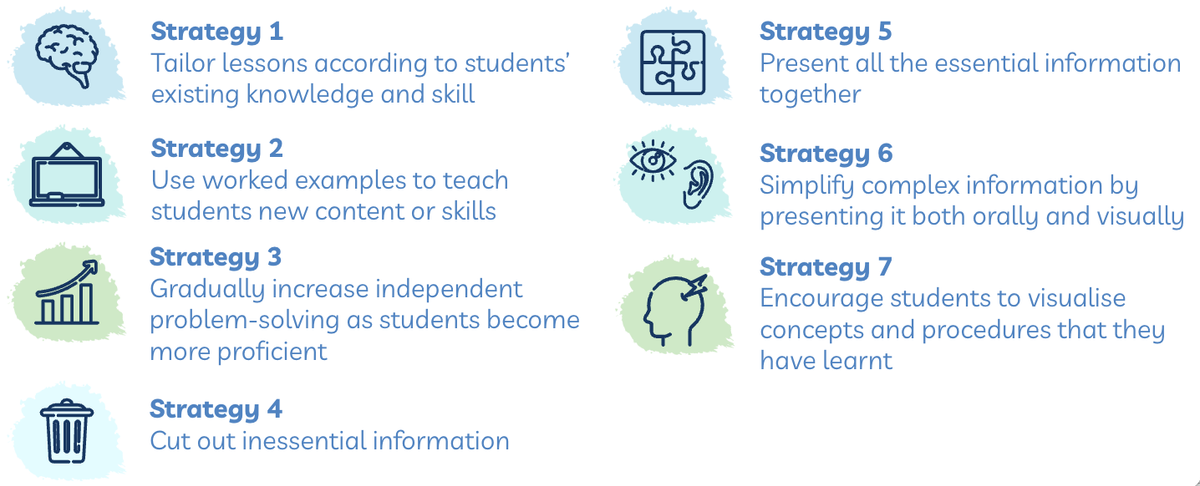Curriculum News
Kim O'Kane | Instructional Specialist

Curriculum News
Kim O'Kane | Instructional Specialist
Curriculum
Our teachers have been exploring Cognitive Load Theory in practice and Daily Review during our Professional Learning Sessions.
Cognitive Load Theory
Cognitive load theory examines how the presentation of information affects learning, taking into account the limitations of working memory. It suggests that there's a limit to how much new information our brains can process at once, and that optimising how we teach can help students learn more effectively.
The Cognitive Load Theory is backed by a strong foundation of evidence indicating that students achieve optimal learning when provided with clear instructions along with ample opportunities for practice and feedback.
Researchers have identified a number of strategies that can help teachers to maximise student learning. These strategies work by optimising the load on students’ working memories.


By understanding cognitive load theory, educators can design more effective learning experiences that maximize the chances of students successfully processing and storing new information in English, Mathematics and Religious Education.
Daily Review
Daily review involves the practice of revisiting previously learned material regularly, usually at the start of each class or lesson. This approach aids students in solidifying their knowledge, retaining information for the long term, and establishing connections between previously learned and new concepts. The objective is to boost students' confidence, enhance their fluency, and ensure they possess the necessary skills for the lesson.
Daily review enhances learning by contributing to a student’s long-term memory and reinforcing their comprehension. Essentially, daily review is an effective teaching method that helps sustain student engagement, improve memory retention, and facilitate continuous learning in the classroom.
During our daily review sessions, students use whiteboards to record their answers, count along with the teachers in Maths and use visual aids displayed on the boards in classrooms.
With you in Faith and Education,
Mrs Kim O'Kane
Instructional Specialist